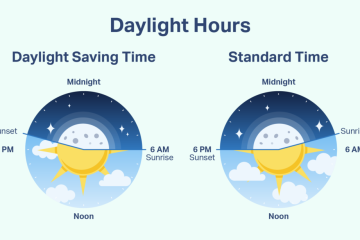Understanding Daylight Savings 2025: What You Need to Know

Introduction to Daylight Savings Time
Daylight Savings Time (DST) has been a topic of discussion and change as societies adapt to the rhythms of modern life. The biannual clock adjustment not only affects our daily routines but also has implications for energy consumption, mental health, and even farming. As we approach 2025, it is important to stay informed about the upcoming changes and their significance in Canadian society.
What is Daylight Savings Time?
Daylight Savings Time involves setting the clock forward by one hour during the warmer months, allowing for more daylight in the evenings. Traditionally, clocks are set forward in March and set back in November, promoting longer days and encouraging outdoor activities after work or school. However, the practice has been met with mixed reactions, with some arguing that the shift disrupts sleep patterns and overall productivity.
Upcoming Changes in 2025
In 2025, the start of Daylight Savings Time in Canada is set for March 9 and will conclude on November 2. Various provinces have expressed interest in revisiting and potentially abolishing the clock change altogether due to concerns regarding health and safety. Some studies have suggested that the adjustment is linked to an increase in heart attacks, workplace accidents, and road incidents during the transition periods.
Current Discussions on DST Abolition
In recent years, numerous debates have circulated around the topic of eliminating Daylight Savings Time. In 2019, the province of British Columbia proposed to remain on Pacific Daylight Time year-round. Similar conversations are ongoing in other provinces such as Ontario and Quebec, where residents have expressed interest in perpetuating standard time. As we approach 2025, initiatives to standardize timekeeping without seasonal adjustments could gain momentum, reflecting a broader trend towards prioritizing public health and convenience.
The Importance of Staying Informed
For Canadians, understanding the implications of Daylight Savings Time is essential. Not only will the transition affect schedules and routines, but it also carries broader economic and health-related impacts. Cities and businesses should be prepared for temporary shifts in productivity as people adjust to the time change.
Conclusion and Final Thoughts
As we look ahead to Daylight Savings Time in 2025, it is crucial to consider both the historical context and the evolving nature of our relationship with time. Whether DST continues in its current form or transitions to a new model, Canadian residents can expect to engage in discussions around the impacts of these decisions. Remaining informed will allow individuals and communities to adapt more effectively to the changes ahead.









